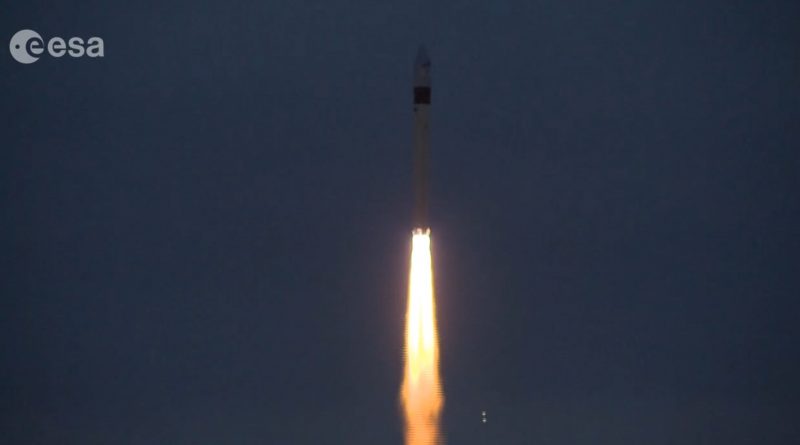Sentinel-3B Land & Ocean-Sensing Satellite Delivered to Orbit by Russian Rockot Booster
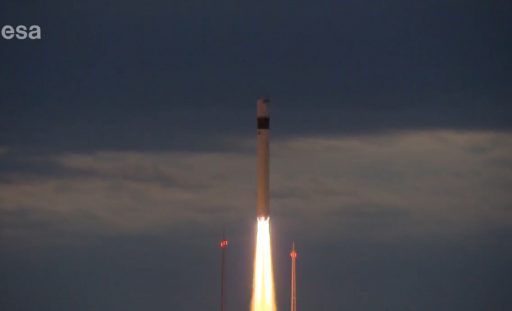
Europe’s Copernicus Earth Observation Constellation welcomed its seventh member on Wednesday after the Sentinel-3B ocean- and land-sensing satellite received a smooth ride to orbit atop a Russian ballistic-missile-turned-space-launcher.
As one of the largest remote sensing constellations, Copernicus currently operates four differently-instrumented satellite types to keep close watch over a changing planet – monitoring land, ocean and atmospheric parameters to serve the scientific community, support operational applications like weather forecasting and ocean monitoring, and guide the decision-making process regarding environmental policies and land use.
The three-stage Rockot/Briz-KM booster shot up from its above-ground launch container at Site 133/3 of the Plesetsk Cosmodrome at precisely 17:57:52 UTC to deliver the 1,250-Kilogram Sentinel-3B satellite into the orbital plane of its twin that launched in 2016. Rockot’s converted ballistic missile stages were in action for five and a half minutes before handing off to the Briz-KM upper stage that was tasked with a pair of engine burns to first inject the stack into an elliptical parking orbit before coasting and circularizing the orbit after half a lap around Earth.
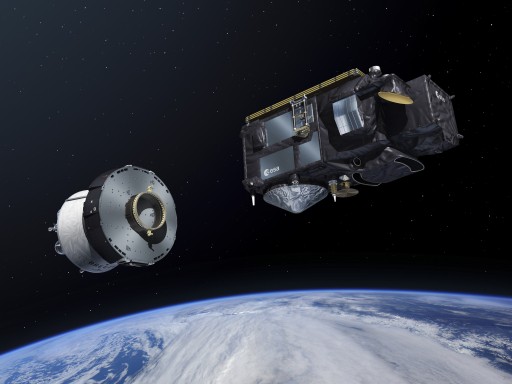
Sentinel-3B pushed off with loaded springs 80 minutes after liftoff to depart the Briz-KM upper stage and embark on its planned seven-year mission collecting surface color and temperature data over land and ocean as well as altimetry data for sea state assessments. The European Space Agency confirmed Sentinel-3B was in good shape after its nighttime liftoff and was in stable communications with the ground.
Wednesday’s launch marked the 31st for the Rockot launch vehicle and its 29th orbital mission since its debut as a space launch vehicle in 1994. It most likely was the vehicle’s final commercial mission operated by Eurockot – a joint project of ArianeGroup and rocket builder Khrunichev – as Rockot is expected to be retired by the end of the year.
Based on a stockpile of leftover UR-100N intercontinental ballistic missiles, Rockot was always faced with a limited inventory of vehicles but the rocket’s retirement comes because Ukrainian-built components of the Briz-KM flight control system are no-longer available to the Russian Federation for regular operation of Rockot missions.
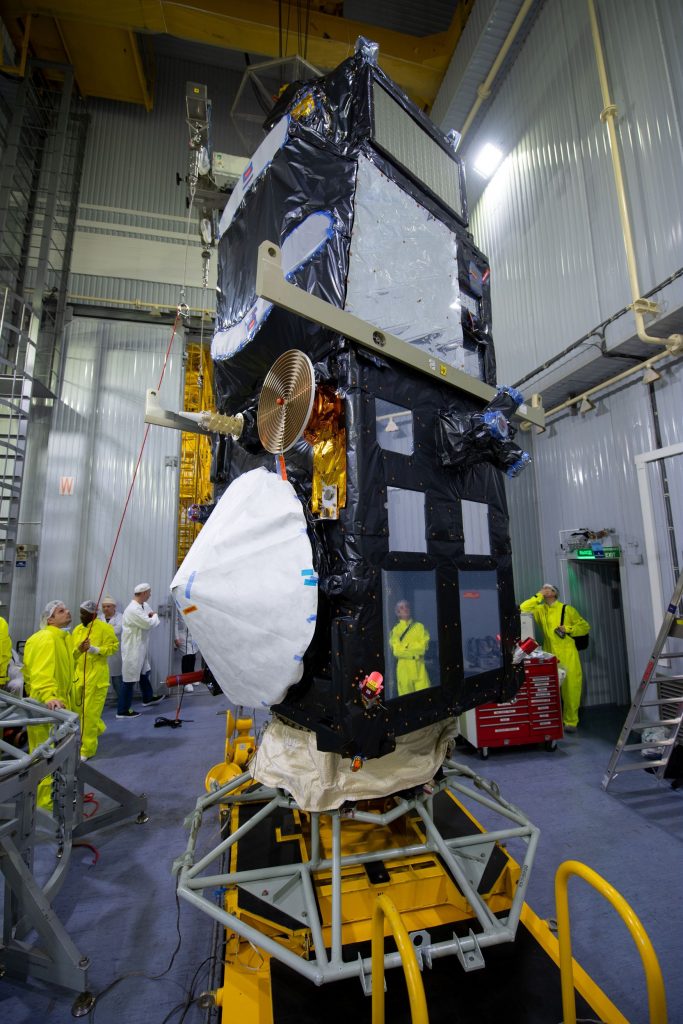
As a result, Rockot is currently looking at another three missions before sailing into retirement: lifting the GEO-IK-2 No. 3 geodesy satellite, an unspecified defence ministry mission and a trio of Gonets-M communications satellites.
Taking over for Rockot is the Soyuz 2-1v that flew for the first time in 2013 and is slightly more powerful than the UR-100N-based vehicle. Soyuz 2-1v is also considered more environmentally friendly due to its use of LOX/Kerosene propellant in its boost stages as opposed to Rockot’s toxic, storable propellant combination.
Copernicus is a multi-billion Euro effort to create an operational system capable of collecting a comprehensive set of Earth observation parameters with a fleet of differently-instrumented satellites and turning them into usable data for scientists, weather forecasters, and policy-makers. The program operates a variety of instruments including high-resolution multi-spectral cameras, radar systems capable of day-and-night, all-weather imaging as well as specialized sensors for the measurements of sea/land topography, atmospheric changes and surface temperature.
The Copernicus Program’s global surveys are used by policy-makers, maritime operators, scientists, meteorologists and resource managers. Taking the pulse of an ever-changing planet, the Copernicus satellite constellation is expected to finish its initial deployment by 2021. With a program cost of €6.7-billion, Copernicus is Europe’s single most expensive space project and regarded as the world’s most ambitious environmental satellite program.
With its current complement of satellites, Copernicus generates around 15 Terabytes of data per day – making it one of the five largest data producers in the world. Over its initial years of operation, Copernicus has delivered over 55 Petabytes of data to a user base of nearly 140,000.
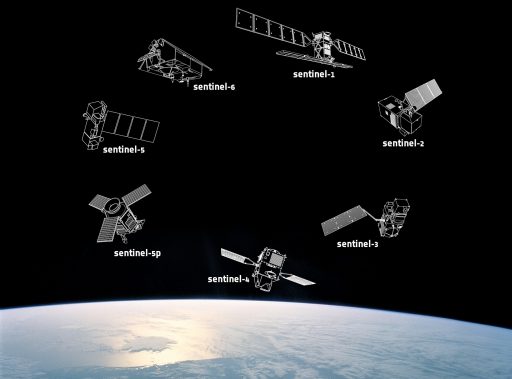
The Sentinel fleet began deployment back in 2014 when the Sentinel-1A Synthetic Aperture Radar Satellite took flight from French Guiana atop a Soyuz rocket, setting out to collect sub-meter resolution radar imagery for land and ocean services. It was joined by a nearly identical twin in 2016 to achieve a high revisit rate between the two.
Sentinel-2 also operates as a two-satellite system, launching in June 2015 and March 2017 and hosting high-resolution, multi-spectral imaging instruments to deliver information on land surface parameters, vegetation type, soil and water cover, inland water bodies and coastal areas. The Sentinel-3 satellites are widely regarded as the most comprehensive members of the constellation, hosting four payloads for land and ocean surface temperature measurements and topographical measurements through an altimetry instrument suite.
Sentinel-4 and 5, unlike the other constellation members, are hosted payloads on the next-generation of weather satellites operated by EUMETSAT with Sentinel-4 operating from Geostationary Orbit and Sentinel-5 flying on the MetOp Second Generation in Sun Synchronous Orbit, both tasked with atmospheric monitoring.
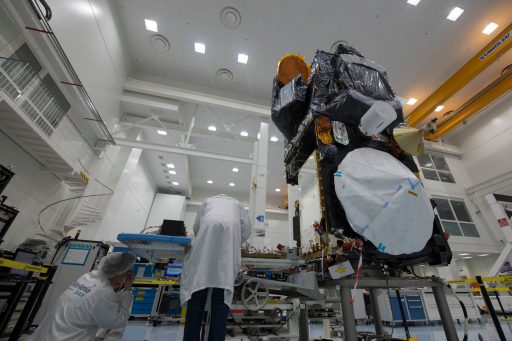
A Sentinel-5 Precursor Satellite was launched last year as a stopgap for vital atmospheric spectroscopy data before the upcoming MetOp satellites are ready for launch. Sentinel-6, set for launch in 2020, will replace the Jason Ocean Altimetry Satellite and additional satellites beyond Sentinel-6 are planned as part of the expansion of the constellation in the 2020s.
Data from the Sentinel satellite fleet are distributed worldwide free of charge, benefiting not only the scientific community but being also employed by businesses, security officials and the public. As such, Copernicus is considered an operational program with satellites being produced in series to ensure data continuity over a long period, unlike one-off science missions like Europe’s EnviSat that provided data from 2002 through 2012.
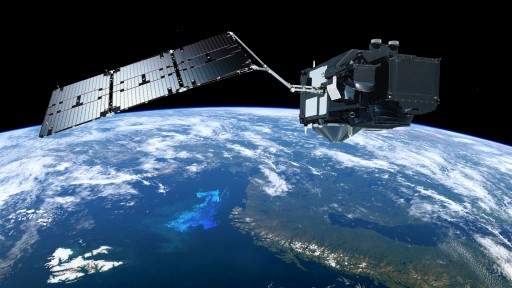
Under Copernicus, the European Commission acts as the funding body and provides overall project management while the European Space Agency is tasked with developing and launching the satellites. EUMETSAT is responsible for the day-to-day operations and the distribution of operational marine data products while ESA is in charge of all other data dissemination and archiving tasks.
Sentinel-3 stands out among the Copernicus satellites as the constellation’s most complex members and operating under a more operational architecture with focus on quick data product distribution after collection.
Standing 3.71 meters tall, the Sentinel-3 twins rely on the PRIMA satellite platform of Thales Alenia Space, employing a single, 2,000-Watt solar array, precise three-axis pointing systems, onboard propulsion for orbit maintenance and a multi-sensor orbit determination system to keep track of their orbit with an accuracy of a few centimeters to be able to deliver precise ocean and land altimetry data.
>>Sentinel-3 Spacecraft Overview >>Instrument Descriptions
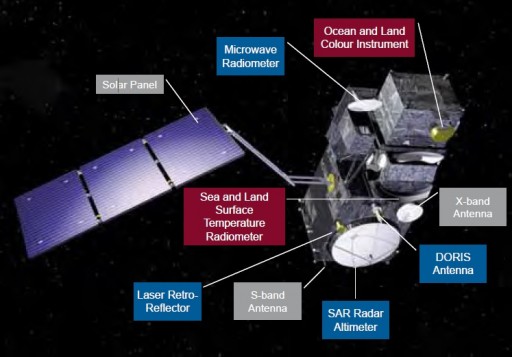
Each satellite hosts a 21-channel Ocean and Land Color Instrument (OLCI) operating at a ground resolution up to 300 meters, a Surface Temperature Radiometer (SLSRT) measuring land/ocean temperature with an accuracy of ±0.3°C, and a Synthetic Aperture Radar Altimeter (SRAL) and Microwave Radiometer (MWR) operate in unison to provide precision measurements of ocean states and land topography.
Additionally, data delivered by the instruments will come to use in land and sea ice assessments, ocean-current forecasting, sea-water quality and pollution assessments, as well as a number of land, atmospheric and cryospheric applications in an operational sense (e.g. fire detection, forest cover mapping, land use monitoring).
Forming a dual-satellite system, Sentinel-3A and 3B will operate at an in-plane separation of 140 degrees – unusual for a tandem configuration where 180 degrees provides the best possible revisit time between the two constellation members. This particular setup was selected for Sentinel-3 in a compromise between a desire to maximize daily coverage of the constellation while also gaining some overlap between the two satellites’ ground swaths to study fast-progressing ocean phenomena like Eddies.
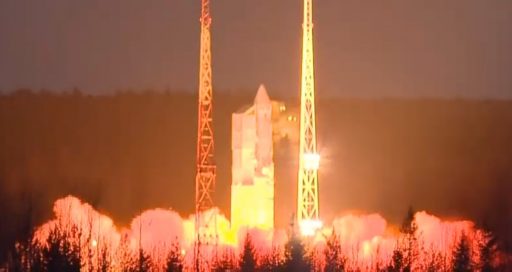
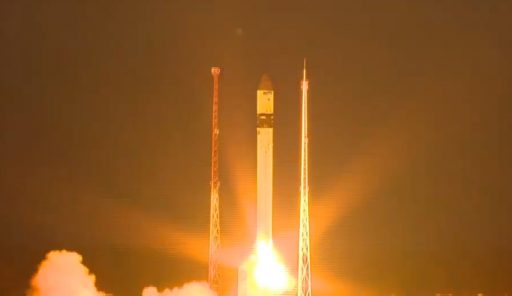
As an operational mission, Sentinel-3 implements a high-degree of automation on the satellite and the ground segment to be able to release data products within three hours of acquisition.
For its ride into orbit, Sentinel-3B relied on Rockot – a converted UR-100N Intercontinental Ballistic Missile, developed in the 1970s and first flown as a space launch vehicle in the 1990s. Standing 29 meters tall, the ICBM-based launch vehicle uses storable propellants – Unsymmetrical Dimethylhydrazine & Nitrogen Tetroxide – on all three of its stages.
Engineers at the Site 133/3 launch pad loaded the two-stage Rockot with 82,200 Kilograms of self-igniting propellants to start the week; the Briz-KM had received its dose of toxic propellant before integration with the rocket. Most of the day on Wednesday was dedicated to the Network Countdown, readying the Sentinel-3B satellite via final battery charging and health checks while also preparing the ground tracking network for its role in relaying communications from the satellite.
Rockot – still partially hidden in its above-ground launch container – was revealed just ten minutes before launch when its Mobile Service Tower retracted to its liftoff position. By that time, Sentinel-3B was running on internal power and teams in Germany had given their final GO for launch.
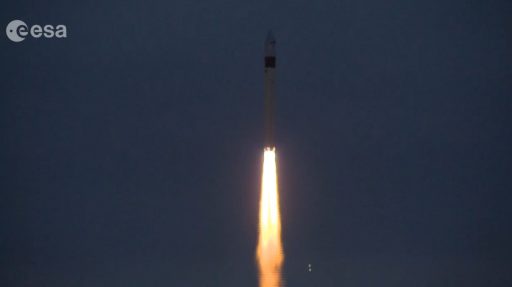
Rockot entered the irreversible steps of its final countdown sequence at T-3 minutes with the pressurization of tanks, opening of fuel valves, the transfer to internal power and the activation of the Guidance Platform. Clocks hit zero at 17:57:38 UTC when final guidance system initialization started.
Rockot ignited its four first stage engines and lifted off at precisely 17:57:52.016 UTC, rising from its launch tube, initially guided by rails. Thundering off, the 107-metric ton Rockot completed a short vertical ascent before starting to pitch and roll to align itself with the planned ascent path to the north west, immediately disappearing into low-hanging clouds in the twilight skies over Russia’s primary military launch base.
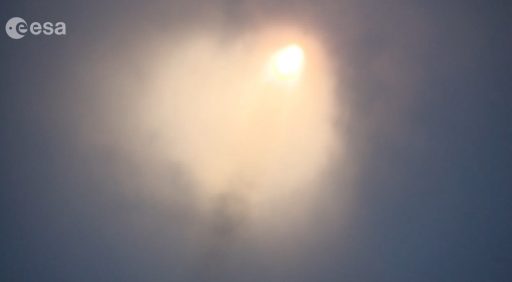
Ascending with a total thrust of 191 metric-ton-force, Rockot burned some 600 Kilograms of propellant per second as it powered away from Earth with three RD-0233 engines and one RD-0234, quickly moving past the speed of sound. The launch vehicle encountered Maximum Dynamic Pressure 50 seconds after lifting off, passing 11 Kilometers in altitude and traveling at 570 meters per second.
At T+2 minutes and 16 seconds, the four-chamber RD-0236 vernier engine of the second stage was ignited and soared up to full thrust of 1,600 Kilogram-force as its exhaust was directed through four hatches on the first stage. Shutdown of the first stage came at T+2:19 and was followed split-seconds later by separation of the 17-meter long first stage, assisted by four retrorockets that pushed the first stage away to clear the way for the second stage to ignite its main engine.
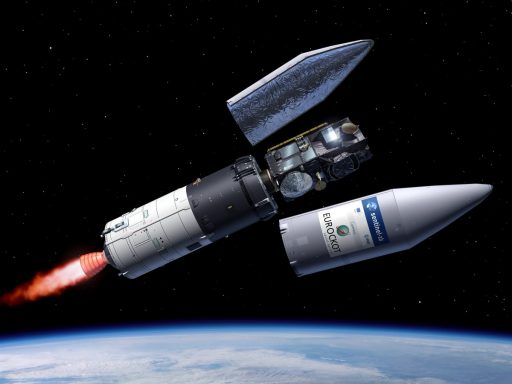
With the first stage headed to a crash landing in the Barents Sea, Stage 2 fired up its RD-0235 main engine, outputting a thrust of 24,500 Kilogram-force for a burn of just under three minutes to lift the vehicle out of the atmosphere. When the stack reached an altitude of 120 Kilometers at T+3 minutes, it was safe to jettison the protective payload fairing and expose the Sentinel-3B satellite as aerodynamic forces could no longer harm the delicate payload.
Rockot’s job was done at T+5 minutes and 19 seconds when it shut down its second stage and separated the Briz-KM upper stage to finish the orbital injection. Briz-KM initially ignited its four 392-Newton vernier engines for propellant settling prior to firing up its S5.98 main engine on a burn of nine minutes to lift the satellite into a Parking Orbit. Only the first portion of the lengthy burn was covered via live telemetry before Briz-KM headed out of ground network range, leaving teams with nothing to do but wait for Briz-KM to complete its pre-programmed mission profile before re-appearing in ground station range.
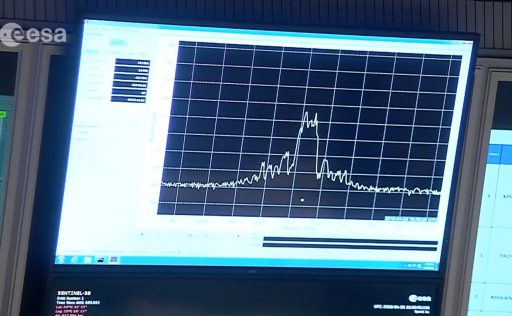
Standing 2.6 meters tall, Briz-KM launched with five metric tons of propellants in its tanks for consumption by a 2,000-Kilogram-force S5.98 main engine. First lifting the stack into Parking Orbit of around 153 by 785 Kilometers, Briz-M was then tasked with a 60.5-minute ballistics phase to climb to apogee and then re-fire its engine for 33 seconds in order to lift the vehicle into a circular orbit 810 Kilometers in altitude, inclined 98.65 degrees.
Separation of the satellite was set for 19:17 UTC, though acquisition of signal was only expected after Sentinel-3B had completed a pre-programmed series of steps to stabilize its three-axis orientation, deploy the single solar arrays and initiate communications with the ground. Applause broke out at the European Space Operations Center when the first signals of the satellite were detected through the Kiruna, Sweden station – confirming it was where it was supposed to be after a successful launch.
Throughout the night and the next three days, teams at ESOC will put the satellite through a series of tests and reconfigurations to ensure Sentinel-3B is healthy and ready for the activation of its instruments. For the first four months of its mission, the satellite will shadow Sentinel-3A at a distance of less than 250 Kilometers to allow the two to cover the exact same ground scenes to enable cross-calibration of their instruments before they will be spaced at a 140-degree separation in their orbital plane.

